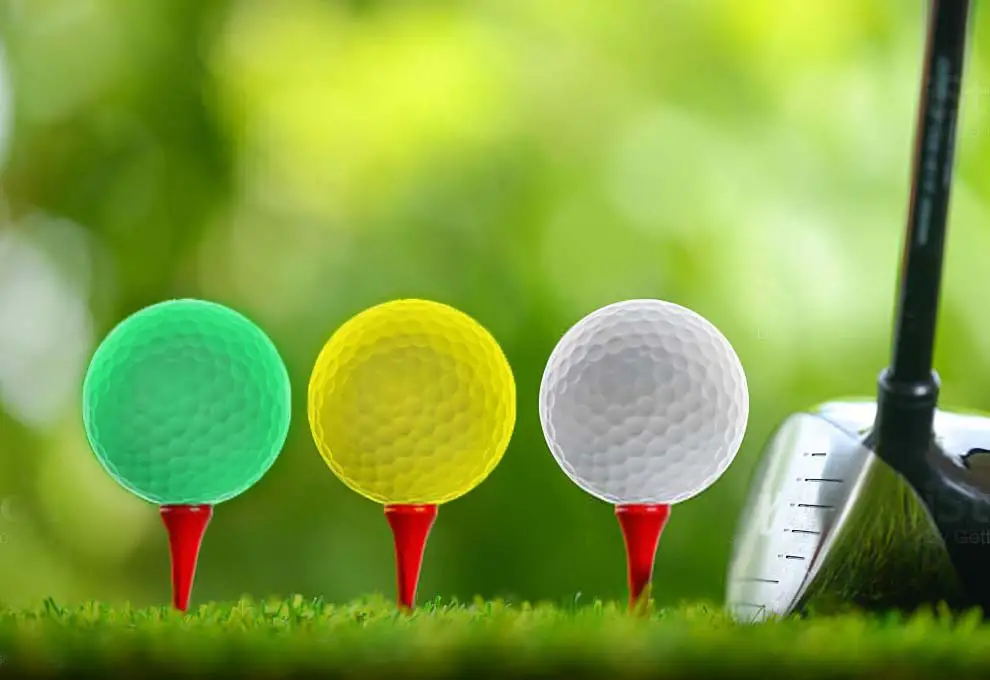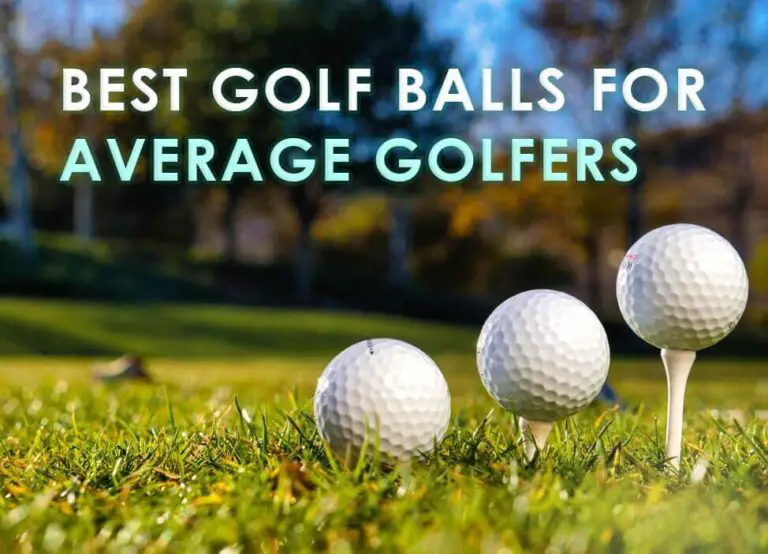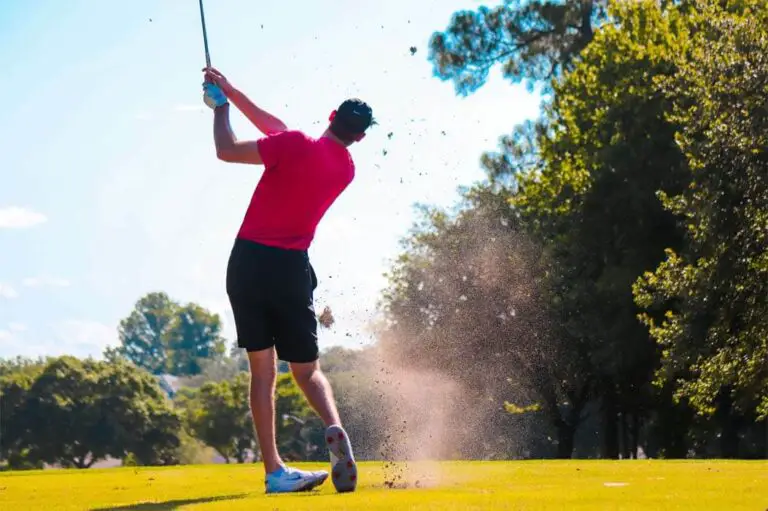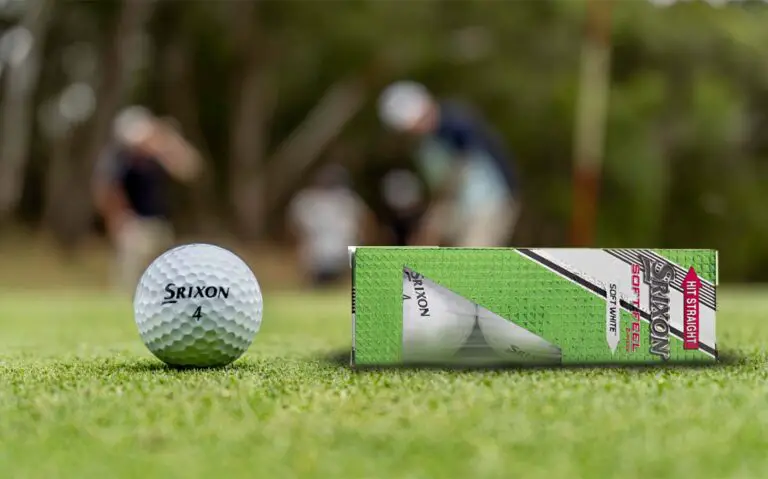Golf ball types are on the front line fight for any golfer. The golf balls type and variant based on different compression, spin quality, brand, color and price point, they are the key equipment on any golfers success in the game. Golf balls aren’t different visually but they are different in many other ways depending on the players choice and skill.

The swift progression of golf technology and club advancements have led to the perception that golf balls have seen slower and less frequent improvements.
However, this is far from the truth as golf ball technology has made significant strides in recent years.
While many people are brand-loyal when it comes to balls, there are many different specifications that you should consider when choosing the right ball for you.
The process of selecting the most suitable golf ball for one’s game can now be just as beneficial as choosing the correct clubs. That’s what we’ll give you in this golf ball guide.
Different Types of Golf Balls
Generally there are 4 different types of golf balls:
1. Tour performance
2. Tour value
3. Soft Feel distance
4. Straight distance
Tour performance balls are for Pro golfers, Tour value is for semi pro to mid handicap golfers, and straight/soft distance is for beginner, average or high handicap golfers.
Although, there are more depth to it with including a golf ball’s construction, compression, spin rate, price, brand and color.
Based on the type of player you are, you should choose a golf ball but before that you’ll need to know golf balls specifications and understand which one is for which player so that you should be able to choose for yourself.
Does The Type Of Golf Ball Make A Difference?
To advanced pro golfers, the type of ball won’t make huge difference because they will be able to control and get distance out of any golf ball, but for average players, the type of ball is really important if you’re looking to improve your scores.
Golf Ball Construction
The construction of a golf ball plays a crucial role in determining its performance on the course based on distance, spin and feel.
Golf balls have multiple layers or pieces because it allows a golfer to get the optimal feel & game with the ball. Additional layers will help better players with faster swing speeds get more spin, distance and control.
Basically golf ball construction means of how many pieces is a golf ball made of. Generally beginner to average players use 2 or 3 pieces golf balls and pro players use 3-4-5 pieces of golf balls depending on the skill set and preferences.
Golf Ball Pieces, Core, Layers
Every type of golf ball is slightly different from one another. The core materials and size could be a bit different. The same goes for the outer layers and covers. Let’s talk about all the different layers and what they could be made of.
What’s in the center of a golf ball? The center or the core of a golf ball is a solid synthetic rubber and based on how many layers it will have, the shape and size is determined of the core
Bigger Cores = Maximum Distance
Because with a big core it will compress or bend less and it will go further on the hit.
Mantle layers: Some golf balls have additional layers surrounding the core which are the mantle layers that help the ball to create spin with wedges.
Cover: The three main types of covers or outer layers are urethane, Surlyn, and ionomer. Some of the materials are firmer and some of them are softer.
RELATED: Urethane vs Surlyn vs Ionomer
One-Piece Golf Balls
The most basic and cost-effective golf ball to manufacture is the one-piece ball, which is intended mainly for beginners, driving ranges, and miniature golf courses. It is rare to see this type of ball being used as a playing ball.

One-piece golf balls are generally manufactured using a single solid piece of Surlyn that has molded dimples.
These balls are affordable, have a soft feel, and are highly resistant to wear and tear.
However, due to their lower compression, they do not provide the same distance when struck as other types of balls. So they really don’t fall in the straight distance but straight golf balls.
Two-Piece Golf Balls (Straight/Soft Feel Distance)
A two-piece golf ball typically features a solid core composed of high-energy acrylate or resin, and a durable blended cover that resists cuts.
This design provides more distance, soft feel than other type of balls.

The soft two-piece golf ball is perfect for beginners which produces generous amount of distance on the hit with any type of club and easily controllable with soft feel.
These are Straight distance golf balls with very low spin.
Although, two-piece golf balls have very less spin and gets unusable after a fair amount of game.
In spite of this, the two-piece golf balls are one of the popular choices among average to high handicap golfers.
Example: Callaway Supersoft, Srixon Soft Feel.
Three-Piece Golf Balls (Soft Feel & Tour Value)
Three-piece golf balls have 3 parts, first the core which is either a solid rubber or liquid.
Second layer of an enhanced rubber or a liquid-produced layer
Lastly, third layer which is a moulded cover of durable Surlyn, Urethane, or balata-like material.

Three-piece golf balls are sometimes softer than two-piece golf balls. More feel with spin on the rough and they are durable than two-piece golf balls.
While three-piece golf balls are used by high handicap to intermediate players generally, it has different compression level which has to suit the players swing speed and performance of a driver and even iron or wedge.
Three-piece golf balls are suited best ball for average or high to mid handicap players with the spin for Tour Value and Soft Feel distance advantage compared to a two-piece golf ball.
Example: Titleist Pro V1, Bridgestone e12 Contact.
Four-Piece Golf Balls (Tour Value & Performance)
A four-piece ball has a 4 different layers to offer the longest hitting, durability, spin and soft feeling in the game as a Tour Value Golf Ball for low to mid handicap golfers.

The base inner core of the ball is the solid rubber center.
Second layer of the core is also a rubber which transfer the energy from the core after strike.
Next is the middle cover, which is the extra layer, compared to a three-piece ball.
It offers the complete layer that tries to increase driver distance whilst also producing mid iron spin and feel around the green.
The layer of the the outer cover which contains 300-400 dimples and its the thinnest layer that gives the soft feel. The outer cover is usually made from urethane or surlyn.
Example: Callaway Chrome Soft X, Titleist Pro V1x
Five-Piece Golf Balls (Tour Performance)
Five-piece golf balls are the last developed construction that gives insane spin and compression in very high due to its five layer. These are the Tour Performance Golf balls.

The fiver-piece golf ball will have a big core at the center and 3 layers above it and then a thin outer cover layer. This makes the ball super speedy and spin more. This 3 layers which are in between works as a performance controller depending on the swing speed of the striker.
Five piece golf balls are very much expensive but the benefit of the extra layer is that you can make the ball feel softer but still have the performance of a 4 piece ball.. Usually Pro or scratch golfers use five-piece golf balls to maximize their game.
Example: Taylormade TP5
Spin

Low Spin Golf Balls (Straight & Soft Feel Distance)
Low spinning golf balls are best for the beginners who want to make straight shots. Because of its decreasing side spin, low spin golf balls are less tend to slice or hook the ball without purpose and hit a good straight shot.
Even though, low spin golf balls are generally very soft 2-3 piece golf balls giving you great straight fly high in air but will give short distance due to low spin and can roll upon landing on the rough. These are straight distance golf balls.
Mid Spin Golf Balls (Soft Feel Distance & Tour Value)
Great distance ranging from the soft feel golf balls to tour value provide medium spin on the air and around the green.
They have minimal spin but much more than the low spinning golf balls and much less than high spinning balls. These mid spin golf balls are the sweet spot for distance and soft feel.
These type of balls are suitable for mid-high handicap, average to even low handicap players based on the swing speed.
These golf balls have the great distance with high fly and spin in the air with mid spin in the rough with the highest soft feel that gives golfers the position to improve their game.
All major brands build mid spin golf balls because most average golfer uses this.
High Spin Golf Balls (Tour value & performance)
These falls in the Tour value and performance golf balls category which is used by pro to low handicap golfers. The sidespin and spin in the air are insane on the high spin golf balls and pro golfers use this spinning to their advantage by maneuvering the ball as they need.
It gives the same distance on the air of a mid spinning soft feel golf ball but it gives its magic spin around the green that produces more distance than other balls.
High spin golf balls almost feel out of control balls if it is played by any average or mid or high handicap players because its ability to hook or slice can work in their disadvantage.
Related: Everything about golf ball spin: Which spin is best for you?
Compression

When a golf club hits a golf ball with force, the ball’s core becomes compressed or squished. The compression of a golf ball refers to how much it is deformed and compressed when it is struck by a golf club.
Compression in the ball is the pressure that can be transformed into distance.
A softer golf ball will experience more compression than a harder one. From 0 to 200 is measure the balls compression which plays role in the performance of a golf ball because it impacts how far the ball travels, its trajectory, and how it feels to the golfer.
Most golf balls compression range between 50 and 100. 50 is the soft golf balls with low compression which are Straight distance and Soft feel golf balls and 100 or higher golf balls are called high compression golf balls which are Tour Value or Performance.
Compression is measured to understand which ball players should use according to their swing speed.
Soft golf balls with low compression are for slow swing speed players and hard golf balls with high compression are for high handicap players for more control and distance.
Related: Golf ball compression chart & extensive guide
Colors

Colors of the golf ball play important roles depending the factors of eye-sight/visibility, players budget, feel and finding it.
It has been tested that upto 500 yards, yellow color golf ball has the highest visibility out of all other balls. Although, white is most commonly used and has been the go to color for golfers for all these years.
Even though for someone visually impaired or color blind can use yellow ball but can’t use some colors like blue. To know more in depth please read Golf ball visibility.
Related: Best high visibility golf ball colors for you
How a golfer should choose golf ball

Different types of golf balls are constructed differently and can affect your performance. Golf ball manufacturers offer fitting sessions where you can get measured and receive advice from us.
But generally, price and brand will come into play first, then you should see what type of golfer you have and your swing speed.
Based on those you can choose the specifications of the golf ball below.
High Handicap or Beginner Golfer
For anyone who is just starting or has started playing golf newly, should start with a low spin soft golf ball which has two-piece construction with very low compression because your swing speed will be slow.
So a soft golf ball would give you enough distance and feel but most importantly with control and straight shots. Which is most important when starting golf to shoot straight shots consistently.
Get a budget friendly golf ball because you’ll be losing them frequently and they will be easy on your wallet.
Mid handicap or Average Golfer
Mid handicap or average players who has a decent score like 70-90, will have to use a three-piece golf ball because their swing speed will be higher.
A golf ball will low compression which shoots straight and high but have a fair amount of spin, also low on budget but good brand would be the best for an average golfer.
Related: Best Golf Balls for Average Golfers
Low handicap or Intermediate or Semi Pro Golfer
Low handicap players should always use a high compression golf ball with mid to high spin because they usually have a very high swing speed above 100 mph.
A hard golf ball with high compression but soft feel something like the titleist pro V1x.
4-pieces golf balls with high compression are usually very costly, so even a semi-pro golfer can use a 3-piece golf ball and have full advantage.
Pro Golfer
If you’re a pro golfer, you won’t need our suggestion.
Nevertheless, if your not a pro but have aim to become a pro and you want to know what pro golfers use then you’ll see they have a high compression golf with 4-5 pieces construction that goes very far with their very high swing speed and the balls have tremendous spin on the ground.
They usually use white color golf ball but some of them also use yellow and other colors.
Frequently Asked Golf Ball Questions
Why Do Dimples Help A Golf Ball?
Golf balls have dimples to reduce drag.
The air slows down a golf ball after it’s hit, but dimples create turbulence that helps the ball travel further.
A smooth ball would be affected by air pressure more and travel shorter distances. Feather-filled smooth balls were used in the past, but players found that scuffed non-smooth balls traveled further.
Related: What roles do dimples play in Golf Ball?
Are Lake Balls As Good As New?
No, lake balls aren’t as good as new golf balls.
Lake balls are not as good as new balls because they are used golf balls that have been lost in water hazards and retrieved.
They may have scuffs, marks, or discoloration that can affect their performance. However, some companies clean and grade lake balls to restore their quality as much as possible.
These graded lake balls can be a more affordable option for golfers who don’t want to pay full price for new balls but still want good performance.
How Are X-Outs Golf Balls Different?
X-Outs golf balls are different in that they have some kind of flaw or defect that makes them unsuitable for retail sale as a brand new ball.
They may have cosmetic imperfections or minor construction flaws, but they still function as normal golf balls.
They are often sold at a discounted price and are popular among recreational golfers who don’t want to pay full price for new balls.
Conclusion
Alternatively try a few brands out that you like on the course and keep a track of which gives you the best combination of distance, control and feel on the greens. Then play with that make of ball all the time, as changing brands every time you play will not help your game.





